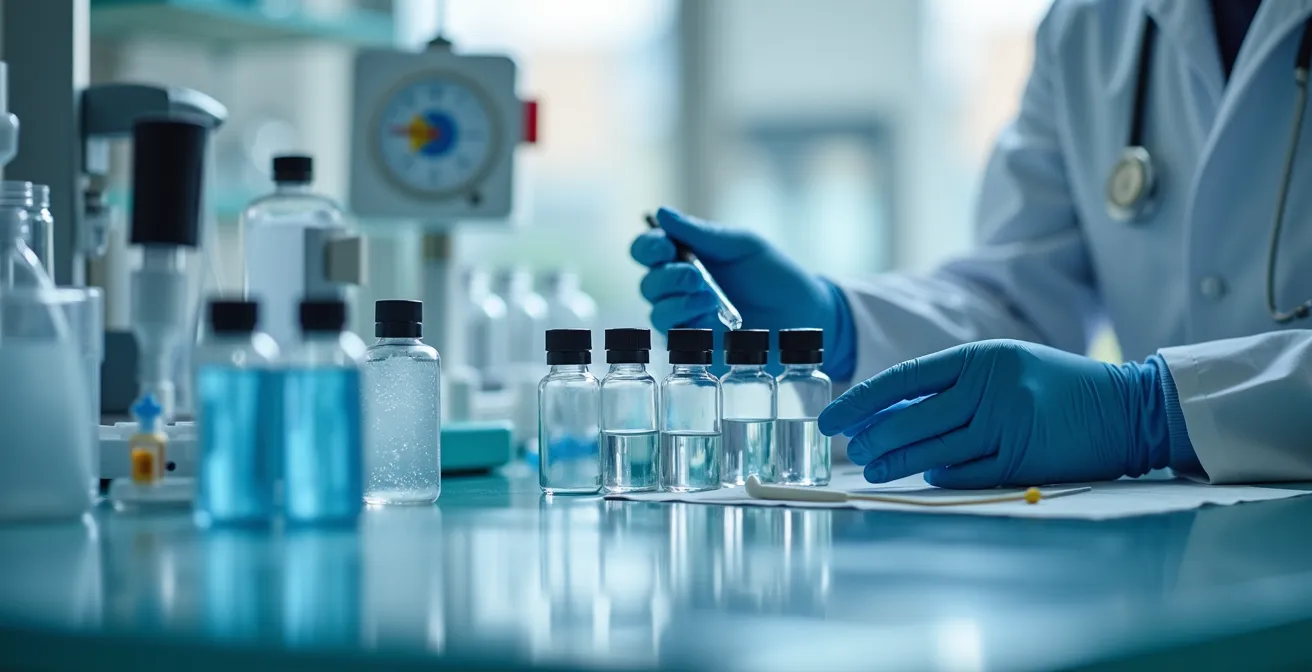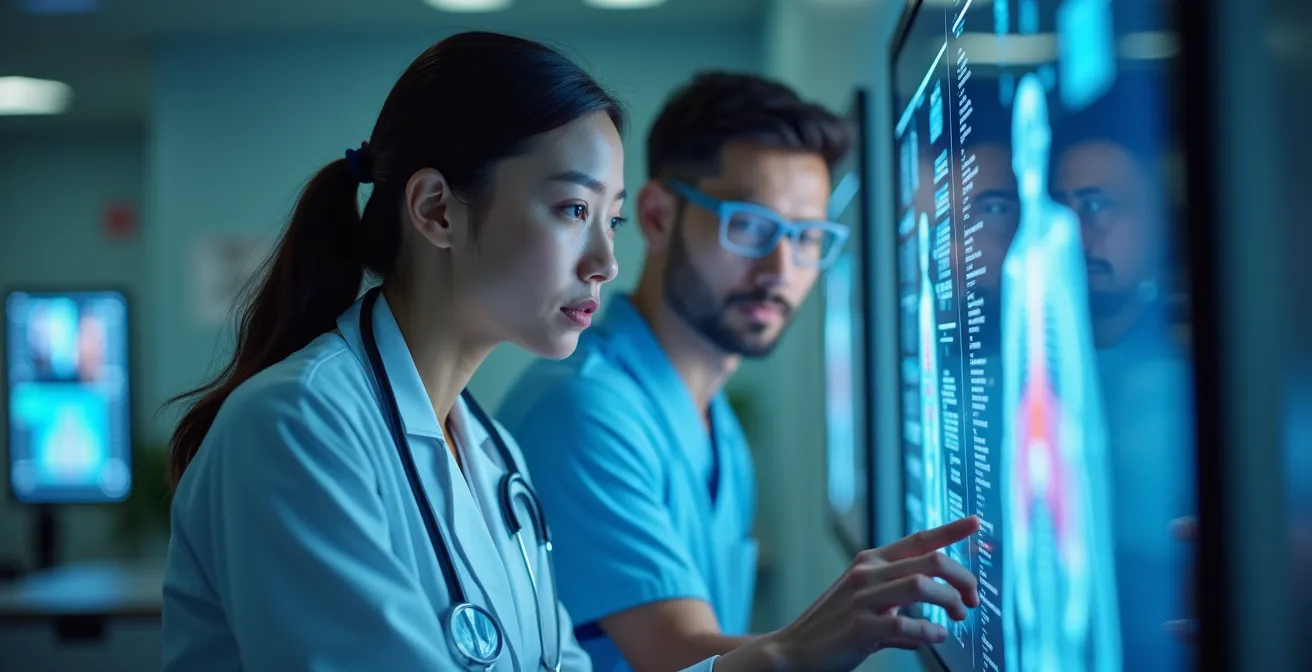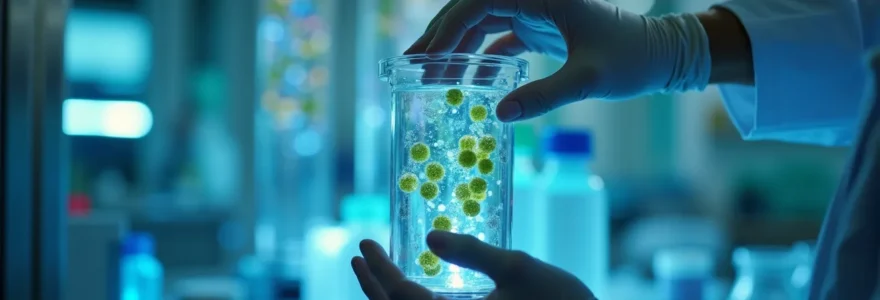In the world of advanced medicine, we often celebrate the final product: the life-saving cancer therapy, the innovative vaccine, or the targeted genetic treatment. Yet, behind nearly every one of these breakthroughs lies a complex and indispensable process that remains largely invisible to the public. This process is biomolecule purification—the rigorous science of isolating a single, active therapeutic molecule from a complex biological mixture. It’s not merely a filtering step; it is the fundamental engine that ensures the safety, efficacy, and very existence of modern biopharmaceuticals. Understanding this process is critical, and for complex projects, leveraging this specialized service can be essential for success.
The Power of Purity: Key Insights
- Purification is the essential process of isolating active therapeutic molecules from biological contaminants.
- It is the critical bridge that translates laboratory discoveries into safe and effective patient treatments.
- Advanced purification technologies are enabling next-generation therapies like gene therapy and personalized medicine.
- Improving purification efficiency directly lowers the cost of advanced drugs, making them more accessible.
The invisible backbone: how purification underpins medical breakthroughs
At its core, purification addresses a fundamental challenge: therapeutic biomolecules like proteins, antibodies, or DNA are produced in living cells, creating a complex soup of desired and undesired components. To create a safe and effective medicine, the active ingredient must be meticulously isolated. Imagine trying to bake a life-saving cake but your pantry is filled with thousands of unmarked jars, some containing flour, and others containing toxic dust. Purification is the process of finding and extracting only the pure flour, ensuring the final product is both potent and safe.
This precision is non-negotiable in medicine. Contaminants can trigger dangerous immune reactions or render a drug completely ineffective. Precise purification ensures that only the therapeutic component reaches the patient, a prerequisite for all advanced medical treatments. While the patient receives a highly refined product, the intricate scientific journey that made it possible remains unseen—a testament to the silent, yet critical, role of downstream processing in healthcare. Indeed, for many biologics, achieving a purity of over 95% is often required for biopharmaceuticals.
What is the main goal of biomolecule purification?
The primary goal is to isolate a specific, therapeutically active molecule from a complex biological mixture, removing all contaminants to ensure the final medical product is safe, pure, and effective.
Purification enables the safe, effective use of biomolecules by removing contaminants, thus ensuring therapeutic efficacy.
– Srividhya Venkataraman et al., Frontiers in Plant Science, 2023
Designing an effective purification strategy requires a deep understanding of the target molecule and the potential impurities. This systematic approach ensures that each step is optimized for the best possible outcome.
Purification Strategy Design Considerations
- Assess target biomolecule properties: charge, hydrophobicity, size.
- Identify impurities specific to the production system.
- Select complementary separation techniques for multi-step purification.
- Optimize process parameters for yield and purity balance.
From lab bench to bedside: the translation power of precision purification
The journey from a promising discovery in a research lab to a viable medical treatment for patients is long and arduous. Purification serves as the crucial bridge on this path. A newly identified protein might show therapeutic potential, but it is the ability to purify it at scale that determines if it can ever become a real-world drug. This process, often called downstream development, is critical to ensuring drug safety and specificity, reducing side effects by removing impurities that could cause harmful immunogenic reactions.
Consider the manufacturing of monoclonal antibodies, a cornerstone of modern cancer therapy. These highly specific proteins are produced in bioreactors but must be meticulously separated from host cell proteins and other contaminants before they can be safely administered to patients. Similarly, enzyme replacement therapies for genetic disorders rely on the delivery of a single, highly purified enzyme. Without precision purification, these revolutionary treatments would be impossible.

As our understanding of disease grows, so does the complexity of the biomolecules we design. Antibody-drug conjugates (ADCs), for example, are highly sophisticated therapies that link a potent chemotherapy agent to an antibody. The production of ADCs requires multiple, precise purification steps to ensure the final product is correctly assembled and free of unbound toxins. Such advancements in molecular biology are directly dependent on parallel progress in purification technologies.
The methods used for purification can vary widely depending on the biomolecule, but they often involve a sequence of highly specialized steps. The following table outlines a typical workflow in the production of plant-made vaccines, illustrating the multi-stage approach required to achieve the necessary purity.
| Step | Purpose | Techniques |
|---|---|---|
| Clarification | Remove debris and impurities | Sedimentation, Filtration, Flocculation |
| Chromatography | Isolate target proteins | Affinity, Ion Exchange, Hydrophobic Interaction |
| Polishing | Enhance purity and stability | Size Exclusion, Membrane Chromatography |
Next-generation purity: emerging technologies sculpting future medicine
While traditional methods like chromatography have been the workhorses of the industry, a new wave of purification technologies is emerging to meet the challenges of next-generation therapies. These innovative techniques offer greater efficiency, handle more complex molecules, and promise to reduce costs. They are essential for unlocking future medical frontiers, from gene therapies to advanced diagnostics.
Among these emerging methods are:
- Magnetic Nanoparticles: These tiny particles can be coated to bind specifically to a target molecule, allowing for rapid separation using a magnetic field.
- Aqueous Two-Phase Systems (ATPS): This gentle technique uses mixtures of incompatible polymers or salts to separate sensitive biomolecules, offering a potential yield increase up to 30% for sensitive biomolecules.
- Microfluidics: These “lab-on-a-chip” devices enable precise, high-throughput processing of tiny sample volumes, accelerating research and development.
Magnetic nanoparticles allow efficient biomolecule purification without complex chromatographic steps, making the process faster and more adaptable.
– Zhang Y. et al., Frontiers in Bioengineering and Biotechnology, 2024
These advanced capabilities are critical for producing future therapies such as purified gene therapy vectors, extracellular vesicles (exosomes) for diagnostics, and complex engineered proteins. The continuous drive for higher purity and more sustainable processes is sculpting the future of medicine.
Integration of Magnetic Nanoparticles with Microfluidics for Enhanced Bioanalytical Performance
A recent study demonstrated a microfluidic system using functionalized magnetic nanoparticles to label and separate low-abundance target cells efficiently. This integration highlights the benefits of automation and scale, showing how combining emerging technologies can overcome the limitations of traditional methods for complex bioanalytical tasks, as detailed in the Frontiers in Bioengineering and Biotechnology journal.
Key Takeaways
- Biomolecule purification is the crucial, unseen science enabling safe and effective modern medicines.
- This process bridges the gap between laboratory discovery and patient-ready therapeutic treatments.
- Emerging technologies like magnetic nanoparticles and microfluidics are paving the way for future therapies.
- Improving purification efficiency is key to making advanced, personalized medicine more affordable and accessible.
Democratizing health: purification’s role in accessible and personalized therapies
The impact of purification extends far beyond the laboratory; it is a key enabler of more equitable and individualized healthcare. More efficient and cost-effective purification processes directly contribute to making advanced drugs more affordable. Innovations in this area can lead to up to a 40% decrease in production costs, which is crucial for increasing global access to life-saving treatments, especially in developing regions.
Furthermore, advanced purification is foundational to the rise of personalized medicine. As Orion Health notes, these technologies are essential for producing bespoke therapies tailored to individual patients, which is a cornerstone of modern healthcare strategy. This includes everything from patient-specific cell therapies to the production of ultra-pure biomarkers that revolutionize diagnostics for early disease detection and treatment selection.

By enabling the production of these highly specific and individualized treatments, purification is transforming medicine from a “one-size-fits-all” model to one that is precisely tailored to each patient’s unique biological makeup. This shift promises not only more effective treatments but also a more just and accessible future for global health. For those looking to further their knowledge, you can Learn about supporting brain health through targeted interventions.
Personalized Medicine Enabled by Ultra-Pure Biomarkers
The ability to produce ultra-pure biomarkers through advanced purification techniques has significantly enhanced clinical outcomes. According to a report by Orion Health, these biomarkers improve the accuracy of early disease detection and allow clinicians to select the most effective, personalized treatments for patients, moving healthcare toward a more precise and proactive model.
Frequently asked questions on medical biotechnology
What is the main goal of biomolecule purification in medicine?
The primary goal is to isolate and purify a specific active molecule, such as a protein or antibody, from the complex mixture in which it was produced. This removes harmful contaminants and ensures the final drug is safe, potent, and effective for patient use.
Why can’t we use unpurified biological mixtures for treatments?
Unpurified mixtures contain host cell proteins, DNA, and other process-related substances that can be toxic or trigger dangerous immune responses in patients. They can also degrade the active therapeutic molecule, reducing the drug’s efficacy and stability.
Are newer purification technologies replacing traditional ones?
While traditional methods like chromatography remain essential, newer technologies are being integrated to improve efficiency, especially for complex molecules. Technologies like magnetic nanoparticles, microfluidics, and aqueous two-phase systems can offer faster, gentler, or more scalable solutions for next-generation therapies like mRNA vaccines and gene therapies.
How does purification make medicine more affordable?
The purification process can account for a significant portion of a drug’s manufacturing cost. By developing more efficient and higher-yield purification technologies, companies can reduce the number of steps, consume fewer expensive materials, and ultimately lower the overall production cost, making advanced medicines more accessible.
